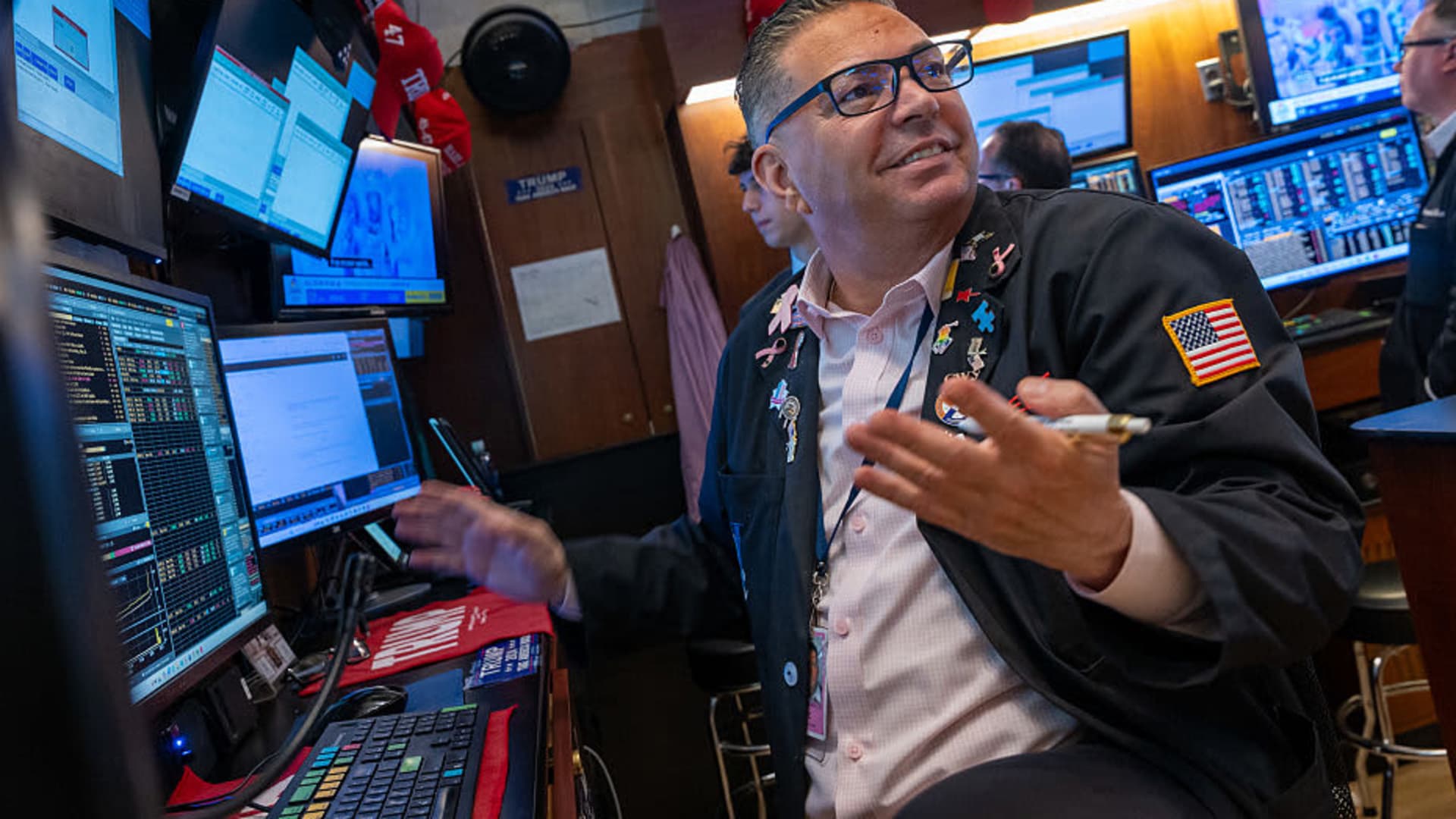Traders work on the floor of the New York Stock Exchange in New York, May 19, 2025.
Spencer Platt | Getty Images News | Getty Images
The U.S. debt-and-deficit situation is bad and facing real prospects of getting worse, triggering a high-profile credit rating downgrade from Moody’s and another selling stampede in stocks and bonds.
Whether the recoil in financial markets continues is largely in the hands of policymakers who seem intent on adding to the U.S. fiscal problems in the name of stimulating growth through President Donald Trump’s “big, beautiful” spending bill.
For now, Wall Street experts are not optimistic about what happens from here.
“Moody’s didn’t tell us anything we didn’t already know, but they did underscore that things aren’t going in the right direction,” said Kathy Jones, chief fixed income strategist at Charles Schwab. “The ‘big, beautiful bill’ also, when it comes to debt and deficits, is not going in the right direction.”
The result, Jones said, is that the U.S. is likely to add to its $36.2 trillion debt load, of which $28.9 trillion is directly held by the public. Tax cuts that aren’t matched with less spending would also pressure the budget deficit, which is heading toward 7% of gross domestic product.

Moody’s Ratings on Friday cut U.S. debt from its top rating, though it changed the outlook from negative to stable. The agency cited unresolved “large annual fiscal deficits and growing interest costs” as the reason behind the move, though it did not specifically mention the House spending bill.
Add to that trade tensions the U.S. has initiated with Japan and China, the largest and third-largest foreign holders of Treasury debt, and it makes for a market headache.
“You put all that together, and the market is increasing that risk premium for long-term bonds,” Jones said. “There is a global repricing in a world where there’s just more sovereign debt and a lot more uncertainty about whether policies are going to adjust to make that look attractive.”
Jump in yields
What it’s meant in market terms has been a severe leg up in Treasury yields, particularly in longer-denominated debt such as the 10-year note and 30-year bond. Investors are demanding higher yields as compensation for the risk they are taking holding U.S. debt.
In normal times, Treasurys are considered risk-free investments as there is virtually zero risk the U.S. ever would default. However, rising worries about the fiscal situation and a resurgence in inflation from tariffs — not to mention the Moody’s downgrade — are forcing yields higher.

30-year yield over the past five days
With the deficit heading to 6.5%-7% of GDP, that is “inconsistent with debt-to-GDP stability over the long run,” Matthew Luzzetti, chief U.S. economist at Deutsche Bank, said in a client note. “Absent a clearer commitment towards putting deficits on a downward path, investor concerns about U.S. fiscal dynamics are likely to persist.”
How much the budget will get stretched is dependent on the final package that gets through Congress. But markets are betting that making the 2017 tax cuts permanent as well as eliminating taxes on tips and overtime, with only partial revenue offsets, will aggravate the fiscal problems.
“If [the bill] fails, the financial markets won’t be happy. But if it passes — well, that might be just as problematic,” wrote Ed Yardeni, head of Yardeni Research. “Why? Because budget deficits matter. That’s especially so when they lead to higher interest rates, higher bond yields and potentially higher inflation. We suspect the Bond Vigilantes already anticipate this.”
Stocks also under pressure
Indeed, the 30-year bond yield topped 5% this week, its highest since October 2023 and an area where it hasn’t traded consistently since the early part of the century. The 10-year note, used as a benchmark for a wide range of debt, from auto loans to mortgages, neared 4.6% on Wednesday, its highest since February.
The market damage, though, hasn’t been limited to fixed income, nor has it been confined to the U.S.

10-year yield in past five days
Stocks also have come under pressure as investor nervousness grows over how higher interest rates will pressure corporate profit margins, raise borrowing costs and slow consumer spending. After easing somewhat from 7% earlier this year, 30-year mortgage rates are climbing again, most recently at 6.81%, according to Fannie Mae.
Bond yields also are rising globally. The 30-year Japanese government bond yield is at a record high as worries over fiscal stability spread.
“I feel like the dam is finally starting to break a little bit, and there’s too many holes in the dike to put our fingers in,” said Mitch Goldberg, president of ClientFirst Strategy. “The issue is that if the cost of debt financing keeps going up, we’re going to find ourselves in a time of austerity, kind of like the European Union was about 10 years ago.”
For equity investors, the changing dynamics of a deglobalizing economy likely mean permanently higher interest rates, potentially slower economic growth and a complicated market picture.
“We’re going to be facing 20% plus moves more frequently in the stock market,” Goldberg said. “It’s not just a new debt financing regime we’re facing. It’s a whole new global economy regime.”





